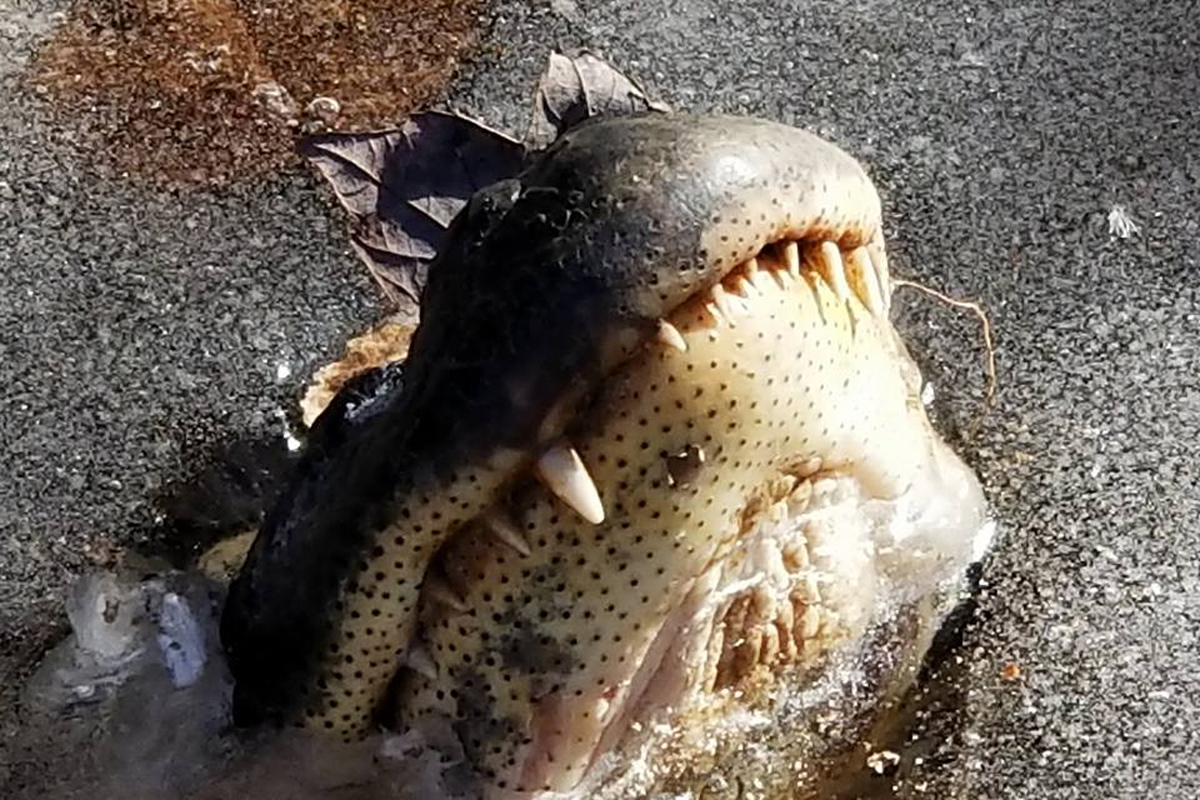When you purchase through links on our website , we may realize an affiliate commission . Here ’s how it works .
A giant prehistorical crocodile once bear a shield on its header , an ornament never before seen on these reptiles that may have been used to intimidate enemies and pull mates , researchers say .
" ' Shieldcroc ' is the earliest ascendent of ourmodern crocodilesto be found in Africa , " articulate researcher Casey Holliday , a vertebrate paleontologist and evolutionary biologist at the University of Missouri at Columbia . " Along with other uncovering , we are finding that crocodile ancestors are far more diverse than scientists previously actualize . "

‘Shieldcroc,’ an enormous ancient crocodile, sported a thick-skinned shield on its head and likely used its long jaws to capture fish.
Shieldcroc was identified from a fossil patch of skull found in the deserts of southeastern Morocco . The fossil was bear in the Royal Ontario Museum for several year until Holliday come across it in a drawer . The extinct wight lived about 95 million years ago back in what is popularly known as theAge of Dinosaurs , when the area was largely populated with fresh water lagoons with profuse forests .
The reptile ’s scientific name isAegisuchus witmeri — Aegisbeing Greek for shield , suchusbeing Greek for crocodile , andwitmeriin honor of anatomist and paleontologist Lawrence Witmer . The researcher think the reptilian belongs to a sibling group of the root of modern crocodilian reptile .
By analyzing dents and hump that pedigree vessels go forth on the bones , researchers find out that the crocodilian would have possessed a circular structure on top of its head resembling a shield , a affair never image before in a crocodilian . This carapace may have been used to serve curb the temperature in the fauna ’s head by circulating blood on a across-the-board surface near the air , or for displays to likely friends and foes .

" Today ’s alligators and crocodiles habituate their heads to show off to mates or interloper onto their territory in a couple of unlike way , " Holliday told LiveScience . " Alligators often put their heads in the air to show off the profiles of their skulls . crocodile , on the other hand , put their head toward intruder or mates in a way that shows off little horn on the backs of their skulls . We do n’t know what Shieldcroc might have done , but there ’s case law for head exhibit with their survive relatives . " [ Top 10 Deadliest Animals ]
Shieldcroc had a flatter skull than other known metal money of crocodilian . This phlegm may have made Shieldcroc ’s head too fragile towrestle dinosaurs . or else , the researchers suggest that with its thin jaws , the ancient reptilian in all likelihood catch up with fish .
" We believe Shieldcroc may have used its long face as a fish trap , " say researcher Nick Gardner at Marshall University . " It is possible that it lay in time lag until an unsuspicious fish swam in front of it . Then , if it was close enough , Shieldcroc simply opened its mouth and ate the fish without a struggle , eliminating the need for hard jaw . "

The bones evoke that Shieldcroc ’s head was not only flat , but long as well , at five foot ( 1.5 beat ) in duration . The reptilian was 30 metrical foot ( 9 meter ) long overall .
" scientist often estimate torso size of it of crocodilians based on the size of it of the skull , " Gardner order . " However , estimating the body size of it of Shieldcroc was difficult , due to theenormous size of the skullcompared to other crocodilians . To make a size estimate , we compared several feature of the osseous tissue to many different species . "
These findings assist show just how diverse crocodilians once were .

" Oftentimes , crocodilians are referred to as sustenance fossil that have n’t changed much in millions of years , but more and more , we ’re finding they were an incredibly diverse chemical group of animals that replete every niche possible by from flight , " Holliday said .
The scientists detail their findings online Jan. 31 in the journal PLoS ONE .















